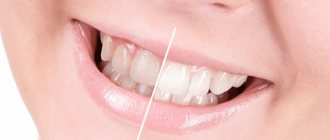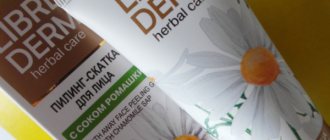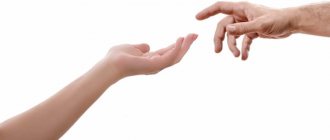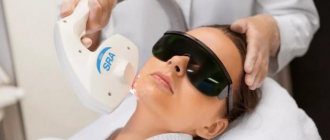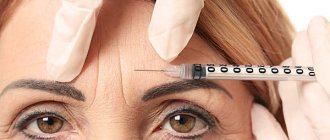Botox is used not only in cosmetology. Botulinum toxin, which is produced by the bacterium Clostridium botulinum, interferes with the transmission of nerve impulses to muscle tissue, and therefore helps in the treatment of certain neurological diseases. In the medical clinic (South-Western Administrative District, Universitet metro station), they treat migraines, bruxism, and hyperhidrosis with Botox, and use it in the treatment of multiple sclerosis and during rehabilitation after a stroke.
How does the drug work in neurology?
Botulinum toxin is administered to patients in minimal concentrations to block signal transmission from nerve to muscle. Thanks to this, the neurotransmitter acetylcholine ceases to be produced, and the muscle tissue relaxes. Botulinum therapy successfully treats tremors, spasms, headaches (pain syndrome is also relieved). Botox helps treat:
- blepharospasm;
- chronic migraine;
- strabismus;
- cervical dystonia, or spasmodic torticollis;
- spasticity after stroke;
- hemifacial spasm.
When is it prescribed?
Botulinum therapy is widespread in neurology and is used for various pathological conditions.
A doctor may prescribe Botox injections in the following cases:
- Condition after a stroke, if spastic muscle paralysis is observed.
- Stable reflex motor contractions of individual muscle groups in any part of the body. For example, blepharospasm (spasmodic contraction of the muscles around the eye), cranial dystonia (spasmodic contraction of the muscles around the eyes and/or mouth), etc.
- Movement disorders (dystonia of various localizations, dystonic tremor, tics).
It is worth noting that the range of indications for the use of botulinum toxin drugs is constantly expanding.
Botulinum therapy is carried out as prescribed by a doctor. Before turning to this type of therapy, contraindications to the procedure should be excluded.
Treatment method for hyperhidrosis
Hyperhidrosis – excessive sweating. To treat it, doctors inject Botox intradermally, and the neurotoxin blocks impulse transmission to the sweat glands. The effect of the procedure is noticeable after 1 – 5 days and lasts for the next 6 – 8 months.
Before giving the injection, doctors examine the patient. If there is a disease that provokes increased work of the sweat glands, therapy is prescribed. Additionally, tests are performed to determine the area and intensity of sweating and exclude contraindications. Hyperhidrosis is not treated with Botox only:
- during pregnancy and lactation;
- if there is inflammation on the skin of the problem area;
- for blood diseases;
- if the patient is taking antibiotics and anticoagulants.
What a migraine patient should know:
- the disease is benign and is not a consequence of damage to the brain or blood vessels;
— migraine CANNOT be cured, but you can choose a treatment that will prevent attacks or significantly ease their course;
- some factors or conditions can provoke and aggravate attacks (smoking, caffeine, stress;
- if attacks are repeated 2 or more times a week, most likely the patient suffers from a chronic form and preventive treatment is necessary (i.e. treatment BEFORE the onset of an attack);
- vascular drugs do not treat migraine;
— you need to try non-drug treatment methods, they can help (acupuncture, massage, fitness, adherence to the principles of a healthy lifestyle).
Migraines come in two forms: episodic attacks and chronic migraines. With chronic migraine, the number of attacks ranges from 8 to 15 or more episodes per month. Patients with the chronic form lose a lot in their quality of life, and dream of not stopping attacks when they begin, but of finding a way to prevent them!
Fortunately, there is such a way, and Best Clinic
offers it to his patients.
One of the most effective and safe ways to relieve chronic migraines is botulinum toxin injections with Botox®. Clinical studies have proven that botulinum therapy is one of the three most effective methods for treating chronic migraine. However, only Botox® is the only drug approved both in our country and in other countries of the world for preventive treatment specifically in patients with chronic migraine.
In the Russian Federation, the use of Botox® for chronic migraine is approved by the Ministry of Health of the Russian Federation. The effectiveness and safety of Botox® was assessed in the largest study to date, the 56-week clinical program PREEMPT.
How to eliminate headaches
To treat headaches with Botox, doctors inject them into the muscles of the face, neck and head. The pain syndrome disappears after the muscle tissue relaxes and the substances that are involved in the formation of pain are blocked. The procedure helps when the patient wants to take a break after taking medications for a long time. It is done before pregnancy so that the expectant mother does not take analgesics in the early stages. The disease subsides after 1 injection, the drug is effective for several months.
Material and methods
In 2014-2015 at the G.B. Clinic A randomized, open post-marketing study was conducted, which included 39 women (mean age 38.1±11.2 years, disease duration 12.1±4.3 years). The patients suffered from CM without aura, which was defined as headache occurring 15 days or more per month; in more than 50% of cases it was migrainous or probably migrainous in nature: at least 4 different episodes of headache, each lasting 4 hours or more [20]. No additional prophylactic treatment was given to the patients. All patients filled out informed consent before inclusion in the study and were examined to exclude other types of headache.
The study was carried out for 9 months, the condition of the patients was assessed before treatment and after repeated injections of Botox (every 3 months), which was injected into the muscles of the head and neck using the fixed point method. The subjects were divided into two groups: 20 patients of the 1st group received 155 units of Botox, 19 patients of the 2nd group received 195 units of Botox. In group 2, a modified “following pain” paradigm was used with an additional injection of 40 units of Botox into the areas of maximum pain: in m .
trapezius
20 units, per
m . t emporalis
10 units, per
m . o ccipitalis
10 E.D. Botox doses and injection points are shown in Fig. 1.
Rice.
1. Doses and points of administration of Botox. The effectiveness of therapy was assessed using headache diaries of patients, recording the frequency of all headache attacks (background and paroxysmal), the number of analgesic drugs taken, and adverse events; questionnaires assessing the impact of migraine on daily activity and work ability in migraine (MIDAS) for 3 months; questionnaires for subjective assessment of satisfaction with treatment.
Statistical data processing was carried out using the Statistica 10.0 software package. The results are presented as the mean and error of the mean ( M ± SD
).
The critical level of significance when testing statistical hypotheses in the study is p
<0.05.
How it helps with other diseases
Botox is effective in treating bruxism. In patients, the masticatory and temporal muscles involuntarily contract, and botulinum toxin relaxes them and relieves spasm. After administration of the drug, their teeth grinding decreases, pain goes away, and facial features become smoother. The effect appears after 3–5 days and lasts up to 8 months.
In multiple sclerosis, the neurotoxin is administered intravenously to relieve tremor, spasticity, and block pain. During rehabilitation after a stroke - intramuscularly. The drug relaxes the muscle so that the patient can train it.
Benefits of treating chronic migraine with injections.
- Long validity period. Usually the substance provides pain relief for 3 months. In rare cases – longer. The procedure itself takes little time, so repeating it will not be difficult.
- No side effects. The toxin relaxes muscles and smoothes out wrinkles, but this is rather a pleasant bonus rather than a consequence. The active substances of medications enter the gastrointestinal tract and bloodstream, and therefore have a negative effect on all body systems.
— Possibility to plan a child. During pregnancy, taking analgesics and giving injections is prohibited. However, you can administer the serum in advance so that attacks do not bother you during the first months. Then there will be no need for medications.
- Rare cases of addiction.
The material was prepared based on information provided by Allergan CIS SARL LLC
Make an appointment by phone: 8 (861) 205 - 0 - 112
Side effects
After the session, weakness, local swelling due to fluid accumulation, numbness, and redness at the injection site may occur. Other possible side effects:
- weakness of adjacent muscles (lower eyelids, neck);
- double vision;
- influenza condition;
- nausea;
- gallbladder dysfunction;
- dry mouth;
- dyspnea;
- bleeding;
- temporary paralysis of adjacent muscles.
To minimize the risk of their occurrence, doctors examine the patient, making sure that he has no contraindications to botulinum therapy or hypersensitivity to the components of the drugs.
The main reason for the development of the disease
One of the main causes of pathology is considered to be compression of the trigeminal nerve or its branches. According to studies conducted in the USA, Germany and Austria, in 57% of subjects, the mechanism of migraine development was associated with the interaction of the trigeminal nerve and the contraction of the corrugator muscle located in the brow ridge.
This muscular structure of the face is responsible for wrinkling the skin above and between the eyebrows and is also called the “frown line.” One of the sections of the trigeminal nerve is associated with this muscular structure of the face. When a person, making facial movements, causes a muscle to move, the trigeminal nerve is irritated, and an attack occurs.
These studies confirm that the development of migraines is associated with the emotional state of patients. Experiencing anger, surprise, irritation and other emotions in which the muscle of the superciliary region is involved in the action, the process of migraine starts.
Botulinum toxin test
This test helps determine whether a patient will benefit from surgery to treat their migraines. The test recreates the effect of surgery using Botox.
The mechanism of the test involves the injection of botulinum toxin into selected points of the branches of the tertiary nerve:
- in the eyebrow area;
- temporal area;
- upper neck;
- nose.
Under the influence of Botox, selected muscle structures are paralyzed. The procedure helps to relax the muscle structures involved in the chain of irritation of the tertiary nerve. The effect of Botox injection lasts for 2-4 months, all this time the patient keeps a diary, recording each attack and his feelings in general
Provided pain relief and a decrease in the frequency of attacks, the test is considered successful. This fact is the reason for carrying out a full-fledged surgical intervention.
Technique of the operation
If the botulinum toxin test is successful, this is considered a reason for surgery. The surgical technique for treating migraines is as follows:
- The surgeon makes a small incision in the area where botulinum toxin was previously applied.
- Through an incision made in the skin, the doctor gains access to the muscle structures involved in irritating the tertiary nerve during their contractile activity.
- The surgeon excises the muscle that initiates the attacks of pain.
- During the excision of muscle fibers, the nerve endings located in the surgical area are not affected or damaged.
- After removing the muscle fibers that provoke the attack, the incision is sutured and the operation is completed.
The meaning of the surgical intervention is simple - the removed muscle “falls out” of the contractile chain, which previously irritated the nerve endings associated with the trigeminal nerve. As a result, a person is freed from migraine attacks. You can undergo surgical treatment after a successful botulinum toxin test in Switzerland.
